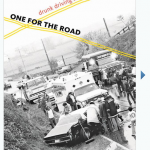 Barron Lerner, MD, author of “One for the Road: Drunk Driving Since 1900″ will be discussed the book on “All Things Considered” this afternoon. You can read my review of the book here. It’s a very thoughtful book, and you may listen to the interesting interview here.
Barron Lerner, MD, author of “One for the Road: Drunk Driving Since 1900″ will be discussed the book on “All Things Considered” this afternoon. You can read my review of the book here. It’s a very thoughtful book, and you may listen to the interesting interview here.
Brooklyn Bugle Book Club: “The Other Side of the Mirror: An American Travels Through Syria” by Brooke Allen
November 11, 2011 Brooke Allen closes her entertaining travelogue about two trips she took to Syria with a quote from Mark Twain: “Travel is fatal to prejudice, bigotry, and narrow-mindedness.” At a time when many Americans view Arab lands in the middle East as monolithic bastions of Sharia law that succor terrorists, she and her husband (who is Jewish) took their two teenaged daughters on a trip to see the sights of Syria. (Allen went back on a subsequent trip with two adult friends.) And as she describes it, Syria is worth the trip.
Brooke Allen closes her entertaining travelogue about two trips she took to Syria with a quote from Mark Twain: “Travel is fatal to prejudice, bigotry, and narrow-mindedness.” At a time when many Americans view Arab lands in the middle East as monolithic bastions of Sharia law that succor terrorists, she and her husband (who is Jewish) took their two teenaged daughters on a trip to see the sights of Syria. (Allen went back on a subsequent trip with two adult friends.) And as she describes it, Syria is worth the trip.
A crossroads of trade (the Silk Road harbors were in greater Syria) and religion (four major western faiths were followed here more or less from their beginnings), Syria was at the center of the ancient and medieval worlds. Damascus has been continuously inhabited for centuries, Allen reports. Other sites were built on, successively, by Jews, Romans, Crusaders, Byzantines, Ottomans. Tamerlane and Saladin built strongholds there. Some were destroyed by attacking Mongols. All of them left sights to see.
Allen divides her book into six overlapping sections that she uses to build an outline of Syria’s history and culture. “Leaders,” which briefly describes the Assads and their rule, comes last. Earlier, Allen describes the geopolitical reasons the Assads are in power. She notes also that “asad” means lion in Arabic; lions are a widespread decorative motif throughout Syria, giving the Assads obvious symbolic opportunities. Allen no more foresaw the Arabic Spring than did anyone else, and so her book does not address the unrest of 2011 (but see the excellent blog Syria Comment for up-to-date information).
The section “Ruins” opens and closes with hotel descriptions; there were some grand ones, and some grand visitors, including kings and queens as well as Patrick Leigh Fermor and T.E. Lawrence. There are ruins upon ruins, some still occupied, many still unearthed. And there is a long history of religious tolerance. Allen describes how archeologists have found, in one small area in Dura, pagan temples, temples to Palmyrene gods, a Christian house church (dating from the third century, it’s the oldest in Syria, from a time when Christianity was still an underground religion), and an ancient Jewish temple with painting after painting of Old Testament scenes, unique in Jewish history because of the proscription against graven images. A temple to Mithra, a Persian divinity, also emerged. Allen calls the juxtaposition characteristic of Syria, “[h]ere in this not-very-large community four religious systems existed simultaneously and apparently in harmony: the pagan, the Mithraic, the Judaic, and the Christian.”
Faith is by far the longest section: Syria was Jewish and Christian before the arrival of Islam, when it became a jumping off point for the Haj. The home also of many minor faiths and schismatic slivers of major ones, Syria remains a secular country today. Allen intersperses history, ancient and modern, including the sad history of the French mandate that arose once the victorious Western powers carved up the former Ottoman Empire after the end of the First World War. Syria’s location has meant many waves of refugees: Palestinians arrived in the wake of the Crusaders; Armenians came from Turkey after 1915; Iraqis have arrived in great numbers in the last decade. That description underlines one of Allen’s main points: religious syncretism in Syria has led to an open, diverse society (as long as its inhabitants are willing to leave politics to the few) that is welcoming to outsiders.
Now is probably not the best time to plan a trip to Syria, tempting though this book makes the prospect. In the meantime, the Met’s new Galleries for the Art of the Arab Lands, Turkey, Iran, Central Asia, and Later South Asia make a pretty good substitute. And then take a trip to Tanoreen in Bay Ridge for the food. Tell us your favorite local Middle Eastern restaurants and cultural centers in the comments.
Update, December 20: NYU’s Institute for the Study of the Ancient World, 15 E. 84th St, has an exhibit about Dura, “Edge of Empires: Pagans, Jews and Christians at Roman Dura-Europos” through January 8. The New York Times article about the exhibit is here.
Have a book you want me to know about? Email me at asbowie@gmail.com. I also blog about metrics at asbowie.blogspot.com.
From the Web
Brooklyn Bugle Book Club: “Wendy and the Lost Boys: The Uncommon Life of Wendy Wasserstein” by Julie Salamon
November 4, 2011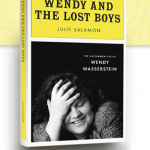 Like it or not, Wendy Wasserstein, playwright and essayist who died at age 55 in 2006, was the voice of her generation, or at least that subset of it that was female and well educated. The 70s and early 80s were a confusing time to be a young woman. In those days before the well-reported decline of men, women fought to be given responsibilities and pay. Watching and eagerly joining in the rise of second stage feminism, hers was the generation that thought women could have it all—good educations, interesting jobs, strong relationships, and above all, children when they were ready for them. Ready in terms of careers and personal development, that is.
Like it or not, Wendy Wasserstein, playwright and essayist who died at age 55 in 2006, was the voice of her generation, or at least that subset of it that was female and well educated. The 70s and early 80s were a confusing time to be a young woman. In those days before the well-reported decline of men, women fought to be given responsibilities and pay. Watching and eagerly joining in the rise of second stage feminism, hers was the generation that thought women could have it all—good educations, interesting jobs, strong relationships, and above all, children when they were ready for them. Ready in terms of careers and personal development, that is.
Older men acknowledged their skills, paid them less than they paid the men, and tried to make up the difference with compliments. Younger men saw them as sisters, but the competitive kind, younger siblings threatening to skip into their grade. All of them laughed at the women, and that was hard to take: was it any wonder that the women’s movement got a reputation for not having a sense of humor? Wendy Wasserstein was the first major cultural figure to reflect the confusion in such a funny way. Her essays sparkled; watching “Uncommon Women and Others” was like listening to a late-night conversation with your college friends. She won the Pulitzer and a Tony; she was a celebrity in demand as a speaker; she was a mentor to young actors and playwrights.
Her life provided her material and Wasserstein, quoted by Salamon, said it best: “Funny is a complicated issue.” The life, as reported in this new biography, was messy and secretive. There were family secrets, including an institutionalized older brother (he was either developmentally disabled or mentally ill; Salamon conflates the two) whose existence was kept from Wendy for many years. Successful in many ways, Wasserstein never married, apparently an issue for her mother (her brother Bruce, on the other hand, married four times). Her many accomplishments never seemed to satisfy her demanding mother. At 48 she conceived a child, who was born prematurely. And Salamon reports that Wasserstein selectively kept and disclosed secrets in her chosen family of friends, former lovers, and unattainable but supportive gay men.
Salamon deconstructs the personality Wasserstein showed publicly in her essays and journalism, and identifies large gaps between the representation and the truth, but she never successfully puts the full picture together. Two sides of Wasserstein come through. Salamon regards the grown-up Wendy as a wild child, someone who needed looking after and who left behind something of a mess, unhappy friends and a very young daughter. But Salamon also reports that Wasserstein identified literary executors and made plans for her daughter. The impish giggling funny woman who could turn into a savvy negotiator for herself seems to be a reasonable development from the beginnings Salamon has identified. The selfish, guarded woman, quick to take offense at a perceived slight, comes out of nowhere. Salamon does not integrate them, and as a result this biography, while telling what should be a fascinating story, leaves an unfortunate hole at its center. And the book is not helped by the wooden writing or the lengthy excerpts from documents like a Mount Holyoke College memo about the broadcast of “Uncommon Women.” This is not the biography that Wendy Wasserstein deserves.
Have a book you want me to know about? Email me at asbowie@gmail.com. I also blog about data issues.
From the Web
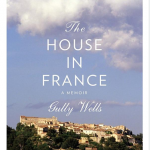 A beautiful and witty mother, a famous stepfather, literary gossip, and a sparkling style: Gully Wells’ delightful memoir has it all, along with the eponymous house.
A beautiful and witty mother, a famous stepfather, literary gossip, and a sparkling style: Gully Wells’ delightful memoir has it all, along with the eponymous house.
Hers was an exciting family to grow up in. Wells’ mother Dee was a journalist who eventually wrote a best-selling novel. Wells’ parents divorced after only five years of marriage when she was quite young, and she lived with her American mother in London, spending several weeks each summer traveling with her father, an American diplomat. Her mother, a journalist, had many suitors, and eventually married the philosopher A.J. Ayer. Wells adored her step-father, though she is clear-sighted enough to agree with her mother’s description of him as an Aspergian with all the sense for the feelings of others of a snail.
It was not an easy marriage; Ayer commuted up to Oxford during the week and lived with Dee in London on weekends. Dee and Ayres produced a half-brother for Wells early on in the marriage. Ayer required a lot of maintenance, and together they enjoyed an active social life among literary and social London. Wells shared it for a long time, and describes many delicious aspects. But Wells also outlines her mother’s family history of mental illness, suggesting that her mother may have inherited a tendency towards less than optimal functioning. The house in France provided some summer grounding for the family after the busy London life of work and school. But the relationship between Ayer and Dee was tempestuous–both took lovers, and Dee’s tongue and temper sound hellish—and eventually the two divorced, though for a while they shared their old house with their new partners.
There was a lot of fallout, emotional and drug-related and medical, and a lot of neglect, particularly of Wells’ brother (Wells was at university by the time the marriage ended). It’s there between the lines of this memoir. But the joy in life, the delight in conversation with friends over good food and wine, along with the excesses (it was the 60s, after all) make for an entertaining excursion into a world now gone.
Some reviewers have allowed that they are jealous of Gully Wells’ glamorous upbringing. Do you agree? Discuss in the comments.
Have a book you want me to know about? Email me at asbowie@gmail.com. I also blog about metrics at asbowie.blogspot.com.
From the Web
We normally think of Brooklyn Heights as an idyllic haven from the challenges of New York City life, tucked away as we are in a corner between hip Williamsburgh and staid Manhattan. And that’s what Alex, a photographer, and Susan, a recovering lawyer who would rather be an artist, the main characters in Ben H. Winters’ entertaining new novel, think when they move with their three-year-old daughter to a lovely duplex on Cranberry Street. They spend time skittering around the beautiful tree-lined neighborhood streets, crawling through all the playgrounds, and sampling local restaurants. They are itching to know their new neighbors, most notably the landlady, Andrea, and her handyman, Louis.
But things are not quite what they seem. Susan becomes convinced that the dream apartment harbors bedbugs. Her skin becomes cracked and infected, while Alex and their daughter remain untouched. An exterminator finds no sign of infestation. Susan tries to solve the problem herself, sending out sticky probes to the previous tenants and lurking on bedbugs websites. Understandably, Alex thinks Susan has lost her mind.
“Bedbugs” is a gothic novel (among Winters’ previous work is the novel “Sense and Sensibility and Sea Monsters”) convincingly moved to our time and our neighborhood. It has a refreshingly modern take and while I can’t give away the outcome the story had me in its pincers start to finish.
I couldn’t read this book before going to bed! Would you? Use the comments to let us know what you think.
From the Web
Brooklyn Bugle Book Club: “fathermothergod” by Lucia Greenhouse
October 14, 2011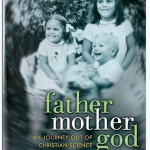 Like other kids growing up in suburban Minnesota, Lucia Greenhouse loved her parents, and was lucky enough to grow up near an extended family of grandparents, aunts, uncles, and many cousins. Unlike many other kids and all of her cousins, Greenhouse was brought up by parents who had converted to Christian Science during her childhood, fortunately, she points out, after Greenhouse and her two siblings were old enough to be vaccinated. As Greenhouse describes it in her new memoir fathermothergod: My Journey out of Christian Science, all three suffered through the chicken pox with untreated symptoms.
Like other kids growing up in suburban Minnesota, Lucia Greenhouse loved her parents, and was lucky enough to grow up near an extended family of grandparents, aunts, uncles, and many cousins. Unlike many other kids and all of her cousins, Greenhouse was brought up by parents who had converted to Christian Science during her childhood, fortunately, she points out, after Greenhouse and her two siblings were old enough to be vaccinated. As Greenhouse describes it in her new memoir fathermothergod: My Journey out of Christian Science, all three suffered through the chicken pox with untreated symptoms.
Greenhouse’s father became a Christian Science Practitioner while she was growing up, and the family moved away from Minnesota, first to London, and later to New Jersey. The children were placed in Christian Science boarding schools. Greenhouse leaves most of the theology of Christian Science obscure, outlining it only with respect to medical care. As she explains it, Christian Scientists don’t treat sickness using modern medicine, believing that we are made in God’s image and likeness and are spiritual, not material, beings. And therefore can’t be sick. Greenhouse meditates on various statements from Mary Baker Eddy’s book Science and Health with Key to the Scriptures and then keeps finding herself tied in logical knots because of them (including, for example, the problems death poses Christian Science).
Many illnesses cure themselves with time. But some diseases don’t get better: untreated, they get worse. This clear-sighted memoir describes Greenhouse’s mother’s decision to use Christian Science to treat what turns out to be an abdominal cancer. The suffering wasn’t limited to Greenhouse’s mother. As Greenhouse describes it, Christian Science Practitioners use prayer and urge good thoughts to help adherents overcome illness (though they don’t use that word). They also, according to Greenhouse, shun doubters, whose negative thoughts might induce ‘mental malpractice’, and Greenhouse and her siblings were kept away from their mother for months during her illness. And because family members may object to the rejection of modern medical treatment, Christian Scientists don’t talk about even obvious illness, insisting that nothing is wrong. Greenhouse and her siblings were forbidden to discuss their mother with their grandparents, aunts, and uncles.
Greenhouse illustrates the pernicious effect the demand for secrecy has on family life. Several generations of her large family were cut off from each other during her mother’s stay at a Christian Science nursing home, and Greenhouse’s extended family didn’t learn about the illness until nearly its end. Greenhouse’s description of coming to terms with her mother’s illness, its treatment, and all the many consequences including vast troughs of anger, fear, and guilt, make for a moving and compelling story.
I can’t say this is an easy book to read because the pain that Greenhouse and her family experienced is rendered so palpably, but I urge you to read it because the lessons about secrecy Greenhouse ultimately draws are universal. Do you agree or disagree? Let us know in the comments.
Have a book you want me to know about? Email me at asbowie@gmail.com.
From the Web
Brooklyn Bugle Book Club: Christianity, The First 3000 Years, by Diarmaid MacCulloch, Part Two
October 7, 2011 Back in July, I wrote a post about this rich and complex book, and I have now finished it (yes, I know it took me a long time, but it’s a long book: more than 1000 pages of text). I continued to find the book astonishing, as much for MacCulloch’s facility with words and clarity of explanation as for the very interesting stories he tells so wittily. MacCulloch is enlightening on such topics as why the Church responded to Galileo the way it did. (MacCulloch describes it as the Church’s defensiveness after Martin Luther, and the fact that the trial took place in the midst of the Thirty Years War, “a destructive battle for the soul of central Europe between Catholic and Protestant, and a time when the Pope was feeling unusually vulnerable.”) I learned the answer to a question I had been wondering about since I read Dorothy Dunnett’s House of Niccolo books: the Papal States came into existence in the 8th century when the Frankish King Pippin (Charlemagne’s father) recaptured Byzantine lands from the Lombards and gave them to the Pope, to the fury of the Byzantines.
Back in July, I wrote a post about this rich and complex book, and I have now finished it (yes, I know it took me a long time, but it’s a long book: more than 1000 pages of text). I continued to find the book astonishing, as much for MacCulloch’s facility with words and clarity of explanation as for the very interesting stories he tells so wittily. MacCulloch is enlightening on such topics as why the Church responded to Galileo the way it did. (MacCulloch describes it as the Church’s defensiveness after Martin Luther, and the fact that the trial took place in the midst of the Thirty Years War, “a destructive battle for the soul of central Europe between Catholic and Protestant, and a time when the Pope was feeling unusually vulnerable.”) I learned the answer to a question I had been wondering about since I read Dorothy Dunnett’s House of Niccolo books: the Papal States came into existence in the 8th century when the Frankish King Pippin (Charlemagne’s father) recaptured Byzantine lands from the Lombards and gave them to the Pope, to the fury of the Byzantines.
And that’s not all. MacCulloch convincingly argues that the Western Church hierarchy grew out of the Roman Empire’s bureaucracy:
One suspects that capable and energetic men who would previously have entered imperial service . . . now entered the Church as the main career option available to them . . . The Western Church has remained notable for the presence within its clerical ranks of a great many who are interested in clear rules and tidy filing systems . . . Western theology has been characterized by a tidy-mindedness which reflects the bureaucratic precision of the Latin language: not always to the benefit of its spirituality. (p. 320)
MacCulloch uses “men” here purposefully; elsewhere he discusses women religious figures, including witches, beguines and mystics as well as several administrative geniuses who founded convents and other communities for women. And remember, in reading this paragraph, that the Western Church did not seriously embrace celibacy for its clergy who were not monks until around the 12th century.
There are many more examples–descriptions of the minimal religiosity of the American Founding Fathers, the resurgence of the Russian Orthodox Church in concert with the FSB, the Russian intelligence service, or the heartbreaking description of the centuries of religious tolerance in Poland that was upended in the 19th century, with tragic results in the 20th. MacCulloch points out that there is no ending to his book; I will leave you with one more long quotation:
Throughout the world at the present day, the most easily heard tone in religion (not just Christianity) is of a generally angry conservatism. Why? I would hazard that the anger centres on a profound shift in gender roles which have traditionally been given a religious significance and validated by religious traditions. . . .It has been observed by sociologists of religion that the most extreme forms of conservatism to be found in modern world religions . . . are especially attractive to ‘literate but jobless, unmarried male youths marginalized and disenfranchised by the juggernaut of modernity’–in other words, those whom modernity has created, only to fail to offer them any worthwhile purpose. (p. 991)
This is a history for all of us. Please share your thoughts in the comments.
Have a book you want me to know about? Email me at asbowie@gmail.com.
From the Web
Brooklyn Bugle Book Club: The Canterbury Tales by Geoffrey Chaucer, a retelling by Peter Ackroyd
September 30, 2011Somewhat embarrassingly, I missed reading any of “The Canterbury Tales” during high school and college, so I was very happy when Peter Ackroyd’s version, retelling the stories in modern English prose, made its way into the house. It provided compelling beach reading for two family members before I go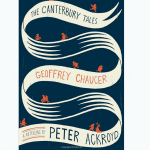 t it; as my husband put it, “sex and violence, what could be better?”
t it; as my husband put it, “sex and violence, what could be better?”
And of course he’s right. The Knight’s Tale, for example, is a story of friendship and chivalry (as appropriate for a knight). There’s also a love story, and another of continuing conflict between friends. I now understand the expression the patience of Griselda, whose cringe-inducing martyrdom to her husband is the subject of the Clerk’s Tale. As I read I realized that I had read versions of the stories elsewhere, including the Wife of Bath’s tale, and Chanticleer and the fox from the Nun’s Priest’s Tale.
Despite the occasional striking anachronism (“No way”) Ackroyd’s version shows why these stories and characters till speak to us. Ackroyd is a biographer and historian, and his version has substantial literary merit of its own. One example. The Franklin’s Prologue ends:
Thing that I speke, it moot be bare and pleyn.
I sleep nevere on the Mount of Pernaso,
Ne lerned Marcus Tullius Cithero.
Colours ne knowe I none, withouten drede,
But swiche colors as growen in the mede,
Or elles swich as men dye or peynte.
Colours of rethoryk ben to me queynte.
(The Norton Critical Edition p. 213.) Ackroyd renders those lines as:
Whatever I have to say will have to be plain and simple. I never slept on Mount Parnassus, or studied under Cicero. I know nothing about flourishes or styles. The only colours I know are those of the flowers in the field, or those used by the dyer. I know nothing about chiasmus or oxymoron. Those terms leave me cold.
And in fact, as Ackroyd tells it, the Franklin’s Tale includes a nice chiasmus.
What’s your favorite of Chaucer’s Tales? How do you feel about modernizing and updating the classics? Translations? Discuss in the comments.
Have a book you want me to know about? Email me at asbowie@gmail.com
From the Web
Brooklyn Bugle Book Club: In “It’s Hard not to Hate You” Val Frankel Looks Back at Anger
September 22, 2011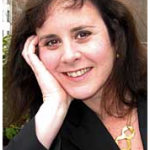 If love and hate are the ace and king of emotions, inseparable but different, then anger has to be the Queen of Spades. It’s a crucial emotion, but holding on to it isn’t healthy, as Brooklyn Heights resident author Valerie Frankel is reminded at the start of her hilarious new memoir, “It’s Hard not to Hate You.”
If love and hate are the ace and king of emotions, inseparable but different, then anger has to be the Queen of Spades. It’s a crucial emotion, but holding on to it isn’t healthy, as Brooklyn Heights resident author Valerie Frankel is reminded at the start of her hilarious new memoir, “It’s Hard not to Hate You.”
And let’s be clear, Frankel has much to be angry about, including her young husband’s death from a freak case of lung cancer, leaving her the widowed mother of two very young daughters; her own family history of cancer and an early cancer scare of her own; and the daily aggravations of life in a large city: traffic, crowds, and unfriendly neighbors.
Starting from her awkward teenage years, through her awkward dating years, and on through her awkward medical complications in her forties, Frankel reports swallowing her anger, humiliation, and rage at life’s mishaps. She keeps it in as hate. When a doctor tells her to reduce stress, she figures, “Doctor’s orders: The hate in me just had to come out.” Over the course of a year, Frankel learns to express her anger, and getting it out makes the feelings manageable. She’s probably healthier. This book is a nice side benefit for the rest of us.
In story after story, Frankel revels in who she hated (hates), and why. She elegantly intersperses academic studies about emotions with the efforts she has made over the years to overcome the hate. One of the many funny examples in the book is the suggestion a couples counselor makes to help Frankel have fights that accomplish something with her (second) husband. “Ask questions. Pretend you’re on Jeopardy! And put everything in the form of a question.” This doesn’t work out quite as the counselor intended when Frankel and her husband get into a fight at Key Food, but the result works. “We weren’t engaged in a productive conversation about our conflict. But we were laughing together, which, unlike fighting productively, we were very good at.” (What is my favorite scene on page 116?)
Examples abound: the BBoA, the past boyfriends, BFF parents, and I kept laughing out loud as I read. You will, too. Anyone who has ever been a teenage girl, or who is a teenage girl, or who lives with a teenage girl, or anticipates having one around in a few years, should head over to BookCourt for insights and some useful truths. Oh, and did I mention? It’s very FUNNY.
What’s your best technique for day-to-day coping? Discuss in the comments.
Have a book you want me to know about? Email me at asbowie@gmail.com.
From the Web
The Fall 2011 session of Subway Sleuths, the New York Transit Museum‘s after-school program for students with autism and working at the 4th/5th grade level, begins Tuesday, October 4. A required introductory morning of fun activities will be held on September 24. Click here for more information. The New York Times covered this innovative program in a story in August.
